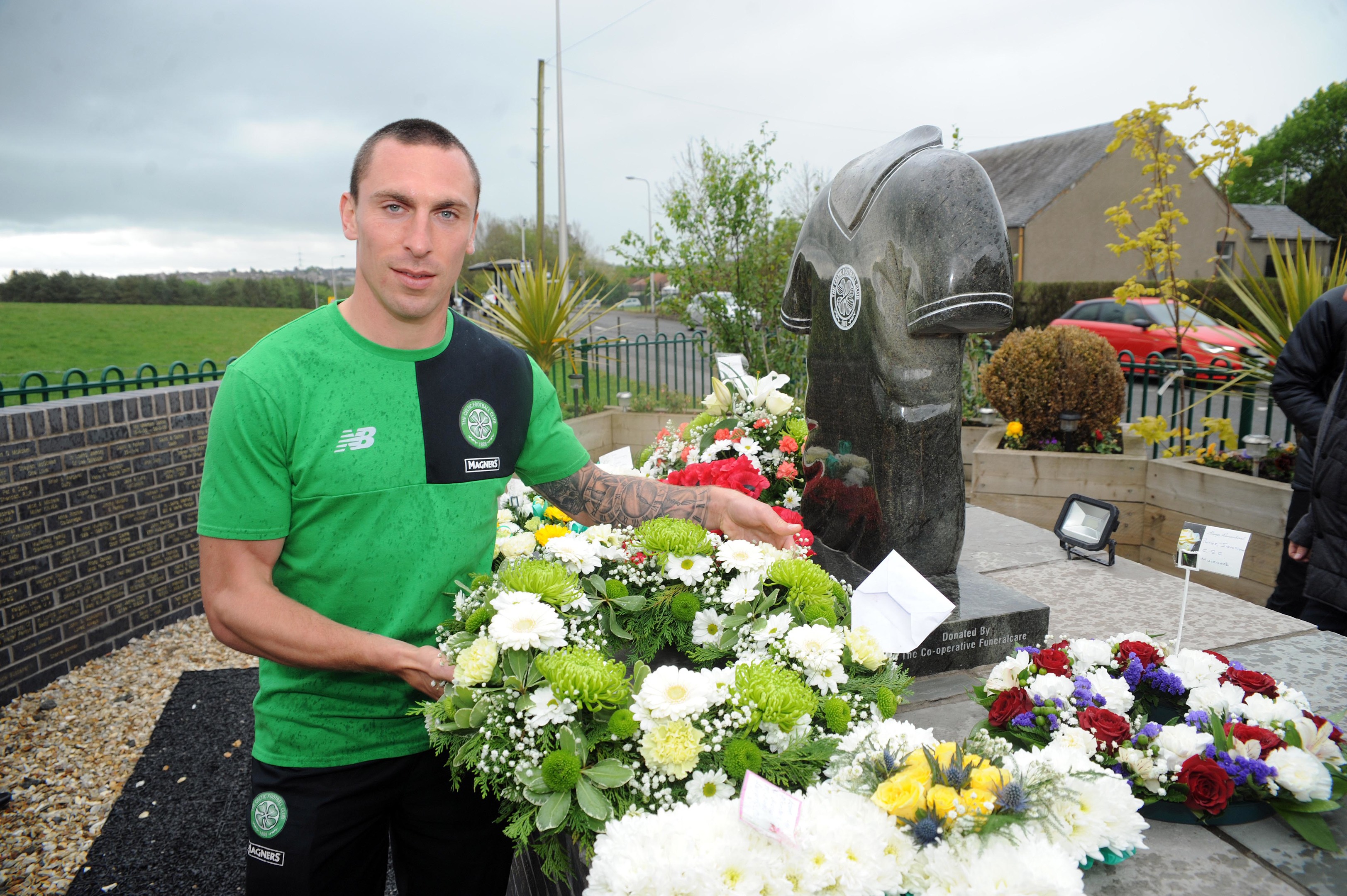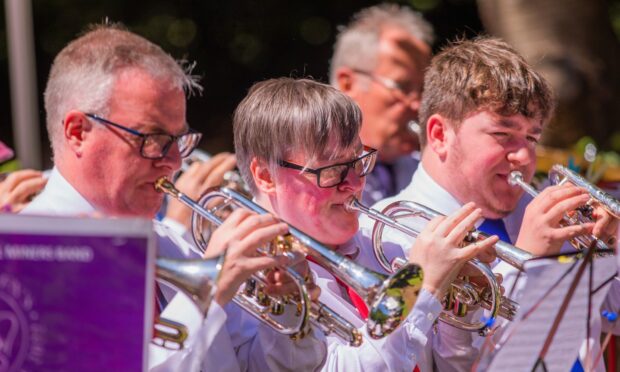A once forgotten Fife footballer who lost his life on the battlefields of World War One has been honoured by his club a century after his death.
Celtic captain Scott Brown was among club representatives who were in the small hamlet of Glencraig yesterday afternoon to pay tribute to Peter Johnstone on the 100th anniversary of his death.
The utility player was killed at the age 29 of at the Battle of Arras, amidst some of the fiercest fighting in the conflict.
Volunteering for the front at the height of his career, officials from Johnstone’s former club and representatives of his former regiment yesterday joined family members in the small community in celebrating his life.
His grandson, Jim Frew, said that he would like his grandfather to be honoured at Celtic Park.
Asked how he felt about yesterday’s ceremony, the lifelong Celtic fan, 74, said: “It feels tremendous to see so many people here.
“We’re trying to get a plaque put up at Celtic Park for those players and supporters that were killed in World War One.
“There were four other players that lost their lives and we would like to see something at the ground where the public can pay their respects.”
Professional footballer was one of a handful of protected professions at the beginning of World War One, on account of its ability to bolster the country’s morale.
However, Johnstone volunteered for the frontline in early 1916, serving initially with the Argyll and Southern Highlanders before moving to the Seaforth Highlanders the following year.
He was reported missing on May 12 of that year as the Battle of Arras raged, and four days later reports of his death began to emerge.
While there remains conflicting reports as to how Johnstone died, his body was never recovered.
Despite his status as a Celtic legend, little was known of Johnstone by the wider public, before a memorial in his honour was erected in Glencraig two years ago.
A former miner, he signed for the Glasgow club in January 1908 having impressed at junior clubs in Fife.
He would go on to make more than 200 appearances in the famous hoops, winning four league titles and two Scottish Cups in his career.
Lisbon Lion Jim Craig was also present at yesterday’s ceremony and said that Mr Johnstone’s sacrifice seemed even greater given the comforts enjoyed by today’s professional footballers.
“We live in a different era now,” he said.
“Even my generation had it better than those in 1916, with better facilities and better pay.
“Looking back 100 years ago it was a remarkable thing that he did.”









